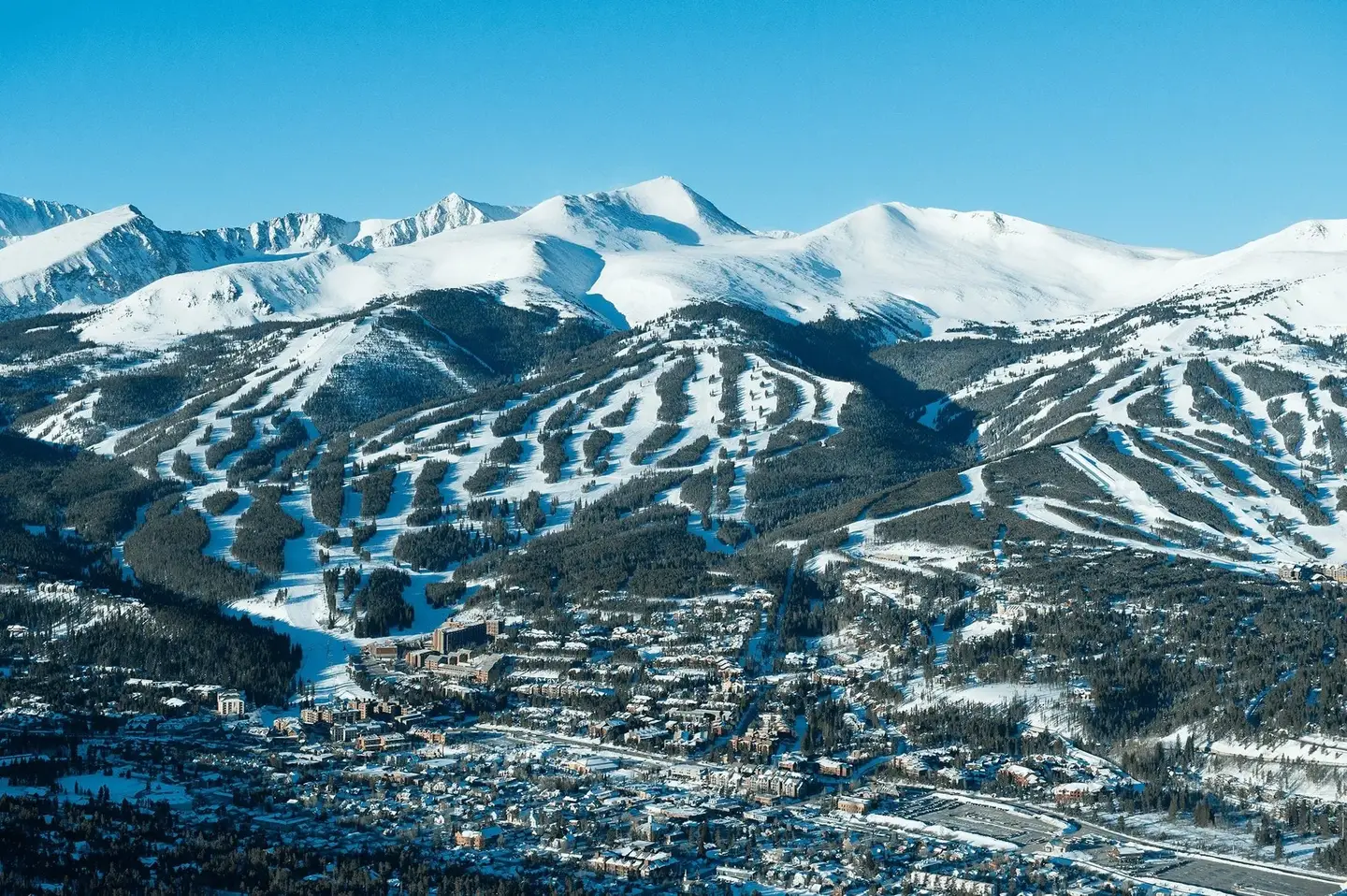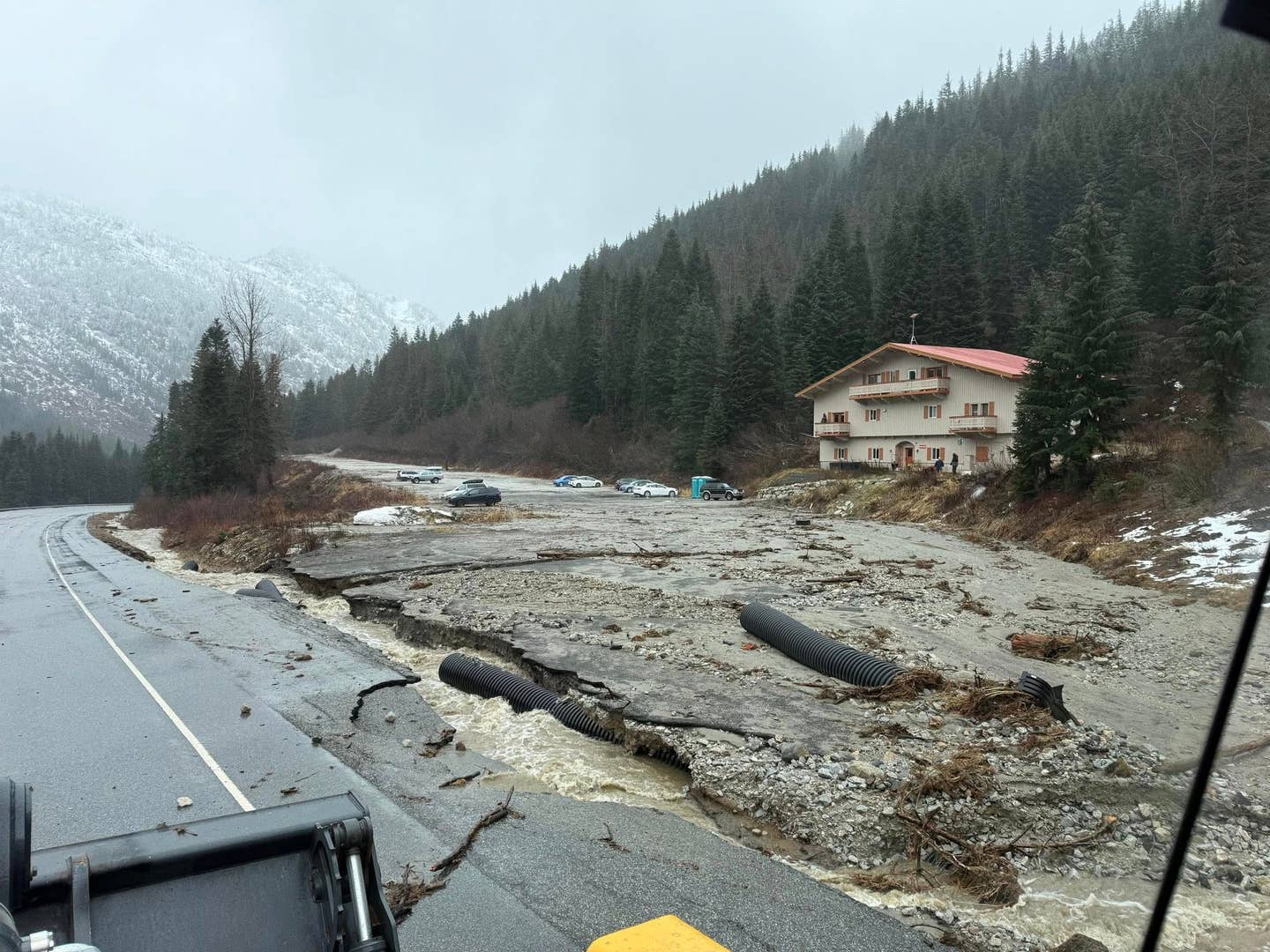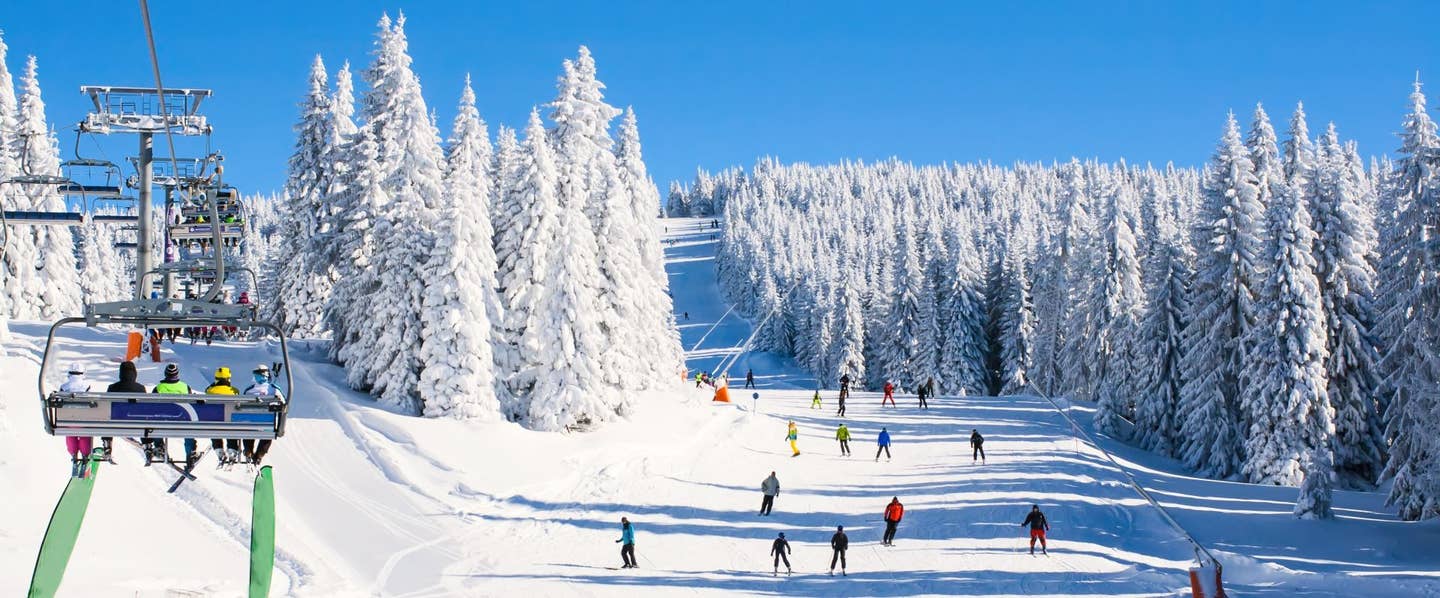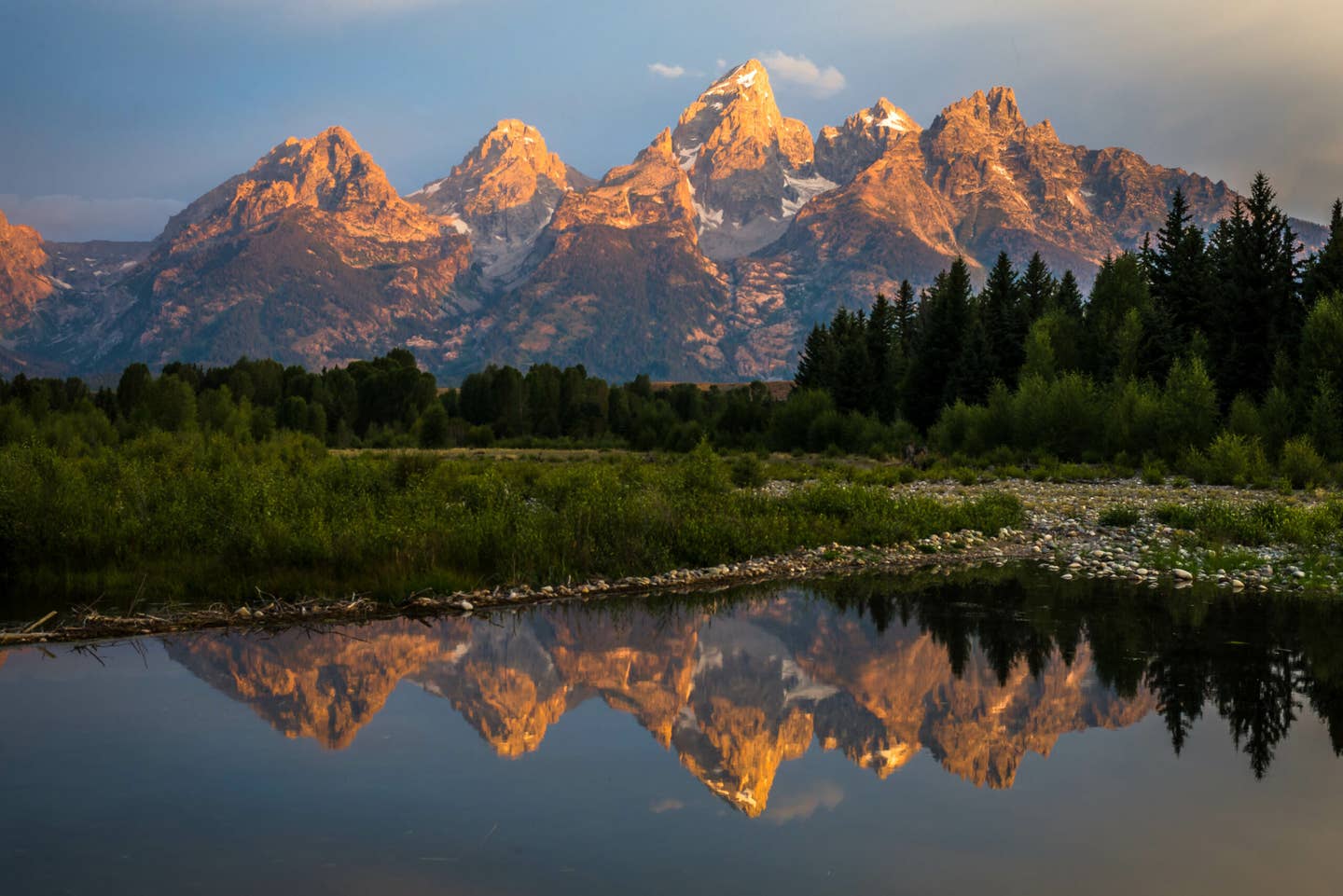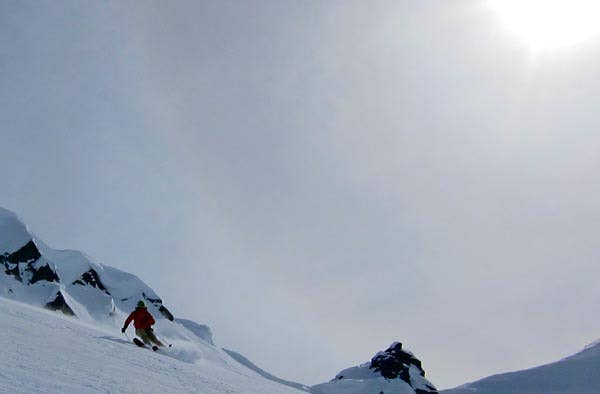

Dynafit Beast 2013 Review Part 2
Popular Stories
Dynafit BEAST - review
By Lee Lau with guest review impressions by Toby Salin
Part 2 of 2 - The Review
Touring mode
Being the touring nerd, I'll start with my impressions. Put simply, the beast feels like a tech binding. It's not the clunky, noisy, ungainly contraption that is a frame binding. The added weight is particularly noticeable during kick turns in steep snow but otherwise this performs exactly the way I thought it would—well.
To engage the tour mode you have to flip down the first heel elevator, so there is no flat-touring mode. I thought this might be annoying but I noticed this a lot less than initially anticipated. Bear with me here; the Beast was designed to have a low stack height and minimal ramp angle for downhill performance (6 mm ramp angle (23 mm (heel) and 17 mm (toe)) which is quite a bit less than Vertical/Comfort/Radical ST/FT (17mm ramp), Speed Radical (15mm). For flat skinning this means that the first elevator position isn't all that bad. I didn't measure exactly but my foot position would be somewhere between the flat and first elevator position of a Dynafit Comfort for example.
Toby's impressions should be read with the knowledge that this is his first ever tech binding. Previous to this he's been stuck in the world of Alpine Trekkers and Marker Dukes. Here's what Toby had to say:
I did a short slack country tour lap today and was really happy with the tourability. Super easy, straight forward set up with no BS little tricks or tabs to pull like the Duke or Fritschi. No heavy-ass binding attached to your foot. Between that, the boot and super light weight carbon Bro's, I felt like I could run up compared to my Duke set up.
I hate normal A/T boots. I'm using the Beasts with Vulcans, which aren't normal A/T boots. The efficiency of touring up is way easier and over the course of a day, I will be carrying thousands less pounds up the mtn.Today I pretty much destroyed some friends using frame-style bindings up Stairmaster Couloir.
- and after a few more days on the Beasts Toby had this further to say -
Tourability of this binding is insane. My buddy and I skinned up the Stairmaster (40 degree boot pack access chute) yesterday because the snow was neck deep! Lots of kick turns and no issues with the binding what so ever.

Toby Salin skinning up the Stairmaster couloir. Don't try this at home kids.
Skiing performance
The Beast is a tremendous ski binding. Hitting variable snow is way less terrifying than with previous tech bindings. Retention characteristics seem to be improved, although I will admit to not having had the good fortune to tomahawk through breakable crust yet to truly test the Beast. I'd wager that part of the precision is due to low stack height of the Beast.
But I am a lightweight and either toured in pow, where almost anything works fine and didn't ski the Beasts much inbounds other than in cut up pow. Here are Toby's impressions with the Dynafit Vulcan/Beast combo on PMGear Lhasa Pow skis:
To truly appreciate the Beast, one would have to be looking for a metal binding that will withstand the abuse and pressure of hard charging inbounds skiing, but also have a touring backcountry function in a "one product does it all" package. No more heading back to the truck to change up your gear.
My 1st run was down through CBC trees at Blackcomb which is a series of benchy/steep tight trees with pretty much every natural terrain feature you can imagine in between. I took it easy because I didn't want to be remembered as the guy who lost the prototype Beast on his 1st run. The 1st thing I noticed was the seamless energy transfer from my body to the ski. No slop in the boot or binding. Felt like an alpine set up more than an A/T set up. After gaining some confidence in the rig, I stepped things up a bit on runs 2 & 3. I launched small to med airs, increased the speed and charged through the trees like I normally would. The more I laid into it, the more confident I felt.
Since the fresh snow brought out a crowd and the alpine was shuttered for wind/avi conditions, the lifts were unbearable. Time to go out of bounds a little bit. I skied the Peak 2 Peak lift line cut down to Fitzsimmons creek which is a 1000 ft vertical chute of gnarly deadfall trees that act as a pillow field; except the wind had scoured it down to the crust layer making it a chattery icy mess. Log dropping on to icy micro trannys with various techy moves to avoid a tib/fib on protruding stumps and logs was the ultimate DIN test. I even stuffed my tail into the crust on one landing where all my weight (200lbs) went to the tip and the tail remained stuck. Not only did the Beast not release, I actually felt the forgiveness of the elasticity under stress. The return from the bottom of Fitzsimmons creek is normally a flat slog that you either skate or tour depending on binding choice. I easily switched into tour mode and began classic XC skiing out and setting the track for my buddy on FKS's who had to push out. Worth every penny right there.
Next up we headed over to the same cut, but on the Whistler side which was loaded with snow rather than wind scoured. Due to low snowpack under the fresh snow, the line was spicier than normal and super techy steep dropping in, but it had 20+cms of fresh snow, so we got a bit of powder intoxication and charged it harder than we probably should have. There was a crux in the middle of a solid 20ft drop to what looked like a nice pillow to a smaller 5-10 ft drop. The nice pillow in the middle turned out to be a big log with 20cms of fresh snow on it, which I ended up casing pretty hard in process. Another opportunity for binding failure proved the toughness of the Beast.
Here are some initial obersvations:
1) Not super light, but lighter than my Duke set up on similar ski.
2) Elasticity was noticable when it got rough and really seemed to cushion out harsh chatter.
3) Ease of tourability was exceptional compared to the Duke. It looks like a lot of moving parts, but pretty simple to go from ski into tour mode.
4) It was nice to feel flat on the ski like an alpine binding and not have to compensate ski stance for stack height.
5) Probably just me being a tech binding jong, but stepping in took some getting used to lining everything up. I ended up stepping in tour mode so that the toe piece could not rotate.
Overall, the Beast appears to be a solid alternative to the Duke/Guardian market and paired with the Vulcan and Lhasa Pow could prove to be a realistic one-ski quiver without much compromise on either end of the spectrum. I don't think the folks who are good with the current Dynafit 12 DIN products will be too receptive to the Beast, but that is not the target market, so I think the MFD/Duke crowd should take notice.
I managed to throw in a pretty harsh DIN check after I dropped in to what I thought would be a loaded pow chute, at speed, that turned out to be super windblown and chattery ice. The clincher is that the exit is a hard left turn over exposure that you have to make or your gonna end up splat to flat. I found myself maching into the turn doing the Franz Klammer with downhill ski chattering as hard as it ever has and wondering if the Beast would hold. To my relief, the Beast held no problem and I was able to power out at speed without having to try and shut it down. That right there is testament to not only the binding, but the boot and ski as well. I would argue that the DIN is a true 16 or higher because I would have lost it on 12ish.
As long as the durability is there, this stuff is totally legit and good to go as a one set up fits all. Time will tell on the durability and I'm doing my best to get out there as much as possible to beat on it!

Beast - knee deep pow - NW Face of Mt Pattison, Blackcomb backcountry
Sign Up for the TGR Gravity Check Newsletter Now

Look turntable binding (top). Dynafit Beast (bottom). Any comparison with a Look turntable is both flattering and daunting as the turntables have a well-deserved reputation for being the best example of a true dynamic system in alpine bindings. Take a knock at the heel of a Look Turntable and the heel rotates giving you two pivot points; one under your heel and one under your toe. The toe can move sideways (up to 45 degrees) before the boot releases. Because of the operation of the turntable the entire boot can deflect from the ski's centre (whether the boot releases depends on spring tension at the toe). The turntable mechanism allows the boot to deflect substantially without pre-releasing; useful in a scenario like a sideways hit into a mogul or sideways landing off a huck). The Beasts' design is on the same theme so as to allow boot deflection without pre-releases but with operations reversed (toe pivots, heel has the spring tensioning mechanisms).
Questions with Hoji
Finally we close this epic with some questions posed by the TGR Forums to Hoji about the Dynafit Beast. His answers are in bold:
1. If you're coming from an alpine binding and generally set the DIN at 10, what would be the best guess at a similar release setting from the Beast?
[Hoji - my alpine bindings are 916s. I ski the Beasts at the same setting ie 13. With the older Dynafits I skied with toe locked out and heel at 12.]
2. If you're coming from a tech binding (I've been on Vertical ST / FT for 5 years), how will the Beast perform in comparison to a Vertical ST with release 8 and unlocked toe? How will the Beast compare to a Vertical ST with release 8 and locked toe?
[Hoji: The Beast has more consistent feel with way better retention and release characteristics. Can't speak to release 8 since I don't ski with release 8. I ski the Beast with unlocked toe (locked toe doesn't really work on the Beast).]
3. Commonly held notion is that Hoji shreds everything on Dynafits, including most segments he's been in for the past 1-2 years. If that's the case, how does the Beast specifically address the "issues" that Hoji has seen with Verticals / Radicals. It's a bit like...if the Radical /Vertical bindings have been working so well for him, what's the point of the Beast. That's a bit of a rhetorical question, and a reasonable answer might be: the Beast is for mere mortals who don't want a locked toe and spiraled tib/fib when they screw up. I want to hear someone address this issue and back it up with real world use
[Hoji: older Dynafits weren't elastic at all. Basically the weak link was the heel boot interface with the boot suspended on the pins and the "elasticity" was in tiny springs. The Beast solves the issue with a solid boot-heel connection and predictable engagement and release. Not to say that I lacked confidence with the old bindings (I had lots of confidence) but I've got a lot more of a secure connection with the Beast setup than I did even with the old Dynafits locked out]

Decker Mountain - Blackcomb backcountry
Summary
What it boils down to is ingrained attitudes among those who tour and those who spend time inbounds. The inbounds meatheads are addicted to their metal turntables and are more than happy to venture out short distances bootpacking slackcountry. The dirtbags will just scrape together whatever they scrape together and will scoff at the price of the Beast and the boots you need to take full advantage of them. The touring geeks are going to look at the Beast and go WTF? Who needs all this metal and extra stuff to lug around. Bottom line is that previous generation tech bindings are not going away anytime soon. They're more than adequate for those who are prepared to dial back their skiing in the backcountry and who want to go light and fast.
The wannabe backcountry folks who tour on framed bindings will look at the Dynafit Beast. The one-quiver of ski folks who want to travel with one pair of skis, boots and bindings to do it all are going to look at the Beast. The people who spend half the day pounding out inbounds laps then chase snow off-resort are going to look at the Beast. That's a pretty big target market. Time will tell if the Beast lives up to its promises but preliminary findings are favorable.
